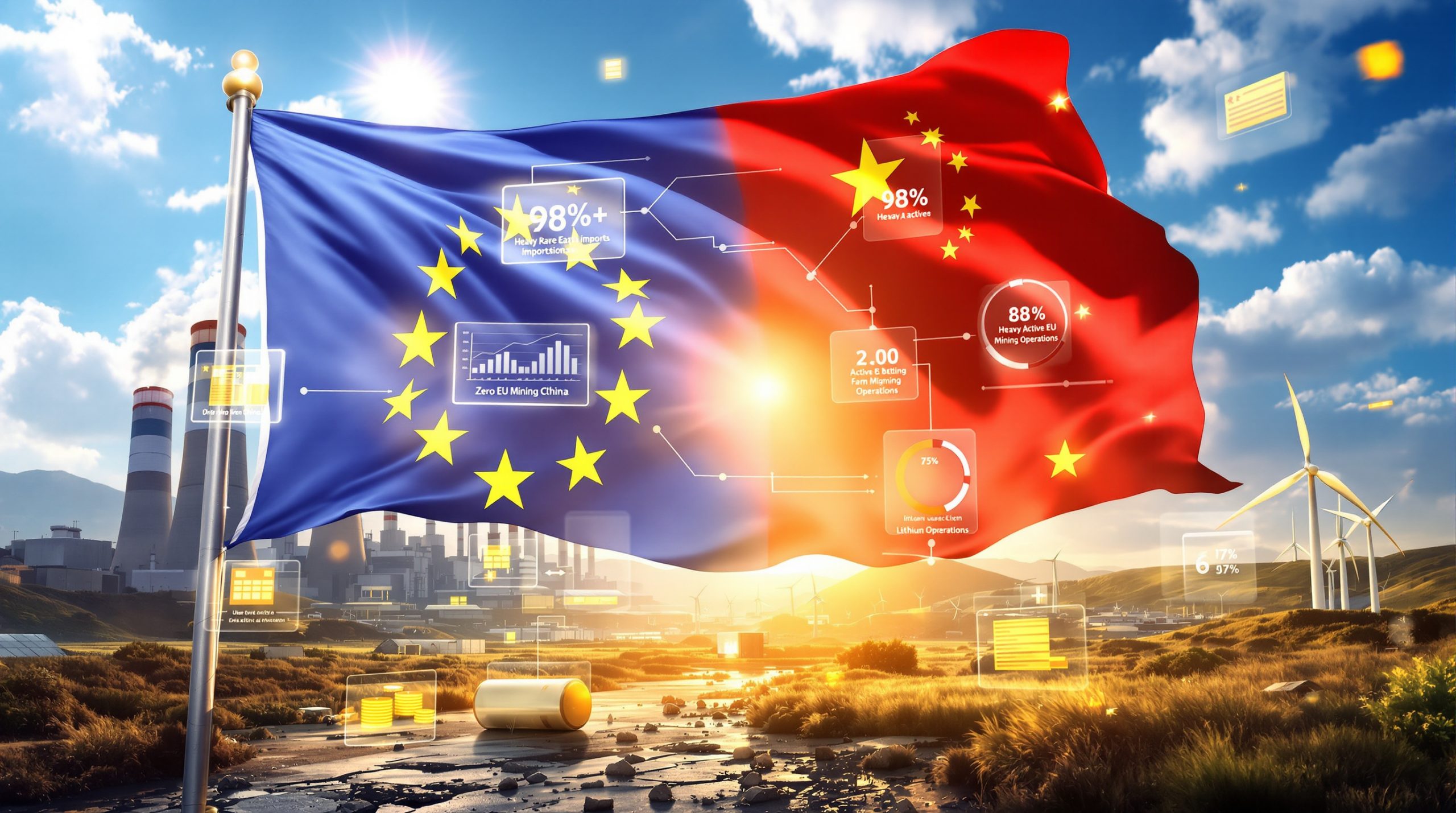Chinese Rare Earths and US Feedstock Imports: Supply Chain Implications
The recent escalation in US-China trade tensions has brought rare earth elements (REEs) into sharp focus as strategic commodities critical to modern technologies. China's export controls on seven REEs, coupled with the imposition of 125% tariffs on US rare earth imports in 2025, has disrupted global supply chains. MP Materials, owner of the sole US rare earth mine, halted exports to China in March 2025, testing the resilience of Sino-US trade frameworks. Meanwhile, Chinese processor Shenghe Resources has mitigated impacts through diversified sourcing from Sichuan province and alternative minerals like monazite. This report analyzes the geopolitical, economic, and technological ramifications of these developments, examining their implications for global industries reliant on rare earths.
What Are the Recent Developments in US-China Rare Earth Trade?
China's New Export Controls on Rare Earths
On March 15, 2025, China added seven rare earth elements—neodymium, praseodymium, dysprosium, terbium, europium, yttrium, and lutetium—to its export control list, effectively halting their international sales. This move came three weeks after Beijing imposed 125% tariffs on US rare earth imports, retaliation for the Trump administration's 2024 tariffs on $200 billion of Chinese goods. The targeted REEs account for over 85% of global supply for high-strength permanent magnets used in electric vehicles (EVs) and wind turbines. Historical precedent exists: China's 2010 export restrictions on REEs caused global prices to spike 300–700%, prompting WTO challenges.
Customs data reveals US rare earth concentrate exports to China fell 13.7% in 2023 and 16.9% in 2024, indicating preemptive supply chain adjustments. The Mountain Pass mine, operated by MP Materials, previously supplied 15% of China's REE feedstock but now faces logistical challenges due to tariffs.
MP Materials and Shenghe Partnership Status
Despite shipping suspensions, the MP-Shenghe offtake agreement renewed in January 2024 remains legally binding through Shenghe's Singapore subsidiary. The two-year contract, extendable to 2027, guarantees annual delivery of 38,000 metric tons of rare earth concentrate—enough to produce 7,000 tons of separated oxides. This arrangement underscores China's continued reliance on foreign raw materials despite processing dominance; 60% of its rare earth feedstock is imported.
How Is Shenghe Resources Responding to Supply Disruptions?
Diversified Supply Chain Strategy
Shenghe, a Chinese rare earths processor, emphasized in its March 2025 statement "diversified channels including Sichuan basin clays and Southeast Asian monazite sands." Sichuan's ion-adsorption clays provide 22,000 tons annually of heavy REEs like dysprosium—critical for EV motor heat resistance. Monazite, a phosphate mineral containing 50–60% rare earth oxides, is being imported from Malaysia and Brazil at 12,000 tons/year. This shift reduces reliance on US-sourced bastnäsite, which constituted 40% of Shenghe's feedstock pre-2023.
Technical adaptations include modifying acid-leaching facilities to process monazite's high thorium content (6–12%), requiring additional radiation shielding. While increasing production costs by 18%, this allows continuous operation at 85% capacity despite US supply cuts.
Declining US-China Rare Earth Trade
Chinese rare earths and US feedstock imports have shown significant shifts as raw material imports from the US dropped from 52,000 tons in 2022 to 44,800 tons in 2023 (-13.7%), then to 37,200 tons in 2024 (-16.9%). Parallelly, Shenghe increased Myanmar imports by 34% (2023) and Vietnamese monazite purchases by 41% (2024). The Strategic and Critical Materials Stockpiling Act revisions (2023) mandate Chinese processors to maintain 90-day REE reserves, further insulating against disruptions.
Why Are Rare Earths Critical to Global Supply Chains?
Applications and Strategic Importance
A single F-35 fighter jet requires 417 kg of rare earths, while each Tesla Model Y uses 4.5 kg of neodymium in its drive motor. The global REE market, valued at $10.3 billion in 2024, is projected to reach $18.7 billion by 2030 (CAGR 9.8%). Beyond defense and clean energy, REEs enable smartphones (europium for screens), medical imaging (gadolinium contrast agents), and precision-guided munitions (samarium-cobalt magnets).
China's Dominant Position in Rare Earth Processing
Despite holding 37% of global rare earth reserves, China controls 85% of refining capacity and 92% of magnet production. Advanced separation techniques, like multi-stage solvent extraction, achieve 99.999% purity—standards unmatched elsewhere. Environmental cost drives this monopoly: processing one ton of REEs generates 2,000 tons of acidic waste, with cleanup costs exceeding $50,000 per ton in regulated economies.
What Are the Implications for Global Rare Earth Supply Chains?
Reshaping of International Trade Flows
The EU Critical Raw Materials Act (2023) mandates 25% domestic REE processing by 2030, prompting $2.1 billion in European refinery investments. Australia's Lynas Corporation plans to double Malaysian processing capacity to 22,000 tons/year by 2026, targeting 30% market share. These developments signal a shift from China-centric "just-in-time" supply chains to regionalized "just-in-case" stockpiling.
Investment Opportunities in Rare Earth Processing
MP Materials' $700 million Phase II expansion at Mountain Pass aims to achieve full separation capability by Q3 2026, reducing reliance on Chinese refiners. The project will employ 1,200 high-gradient magnetic separators to boost yield from 7% to 12%. Similar ventures include Rainbow Rare Earths' Burundi project (3,000 tons/year neodymium by 2027) and Energy Fuels' $150 million uranium-REE cross-processing facility in Utah.
For investors seeking to navigate this complex landscape, understanding geopolitical investor strategies has become essential for capitalising on the evolving critical minerals race.
FAQ About Rare Earths and US-China Trade
What alternatives exist to Chinese rare earth processing?
Beyond Lynas and MP Materials, emerging players include:
-
Iluka Resources (Australia): $1.2 billion Eneabba refinery targeting 25,000 tons/year by 2027
-
KoBold Metals (Zambia): AI-driven exploration identifying high-grade deposits with 8–12% REE concentrations
-
Ucore Rare Metals (Canada): Proprietary RapidSX™ technology reducing separation costs by 40%
How do rare earth price fluctuations impact tech industries?
The 2025 Chinese export controls caused neodymium prices to surge from $150/kg to $240/kg within three weeks. For a typical EV manufacturer using 2 kg of neodymium per vehicle, this adds $180 to production costs—potentially delaying price parity with internal combustion engines by 12–18 months.
Understanding these dynamics requires comprehensive global commodities insights that factor in both market fundamentals and geopolitical considerations affecting Chinese rare earths and US feedstock imports.
Looking for an Investment Edge in the Rare Earths Sector?
Stay ahead of critical rare earth discoveries with Discovery Alert's proprietary Discovery IQ model, which provides instant notifications when significant mineral finds are announced on the ASX. Explore historical examples of exceptional investment returns from major discoveries at the Discovery Alert discoveries page and position yourself to capitalise on emerging opportunities.




